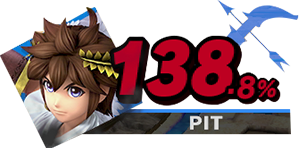Fighting Game Project - Grinding Gears #2
- harveyjamesfleming
- Nov 6, 2022
- 3 min read
Updated: May 18, 2023
My Task for this week(Week 3):
Have the correct level load and spawn the selected character Prefab into the level. I also decided to make some in-game HUD to show player character and their health, as well as a round timer.
Loading the correct Scene:
This straightforward task involved calling the selected level variable from the level select script and using Scene Manager to load that scene. I put this inside an if statement that checked if each player had chosen a character, to avoid unwanted scene loading before players had made a decision.

Loading the character: Finally something visual!
I achieved this by instantiating character prefabs from an array based on the number assigned during the character select menu. I made some placeholder characters with a sprite asset I found online, with a box collider and rigid body, so I can simulate basic gravity and stage collision. The Instantiated clone is spawned at the position of an object in the scene, each player has a different spawn point so they spawn on opposite sides of the screen. The assigning of the tag to each clone is used for the camera script done by one of the other team members, which uses the tags to reference the objects.

This code was adapted from this video(RumpledCode, 2020) which i also used in the character selection during first and second week:
Beginning on the HUD
I took inspiration for this feature from the game series 'Super smash Bros' where the player percentage(which directly affects the knockback they receive), the selected character and the characters name.
I really liked this as it conveyed to each player who was in the lead and who needed to change up their strategy.
This was very simple to implement, after placing blank image and Text boxes where I wanted them, I just made this script. Of course, the artwork in the above screenshot is placeholder until we receive some character designs and the percentage doesn't actually work yet as I haven't met with my group to implement attack/damage systems so I can't reference those.

However, after learning about scriptable objects, I believe that would have been a better way of doing this as this would also help if we decided to add more players.
I also created a round timer, that can be adjusted in the settings menu, to put some pressure on players to attack one another . This was also a simple process, with current time being called from the settings menu slider and having 1 subtracted each second. The timer is updated once per frame and so Time.deltatime is used to make the timer independent of the player's framerate, I did this to allow players on different machines to have the same experience during the round.
The timer gives a very long float number so I used Mathf.Round to give a whole number to make it easier to read.

Conclusion on the 3rd weeks tasks
Overall, I felt that the tasks I completed this week, while simple, improved the look and feel of the game while providing useful information to players. During the final week, I plan to implement a pause menu as well as a pre-round countdown and a round system.
I also hope that I am able to meet with my group to put together our work as i grow increasingly anxious about the lack of communication still, since I have only heard from 2 other members in the group and their work.
References
RumpledCode (Director). (2020, September 11). Unity Tutorial—Simple Character Selection System. https://www.youtube.com/watch?v=3qlRgICRoeA
Bandai Namco Studios & Sora Ltd. (2018). Super Smash Bros. Ultimate (1.0) [Nintendo Switch]. Nintendo.




Comments